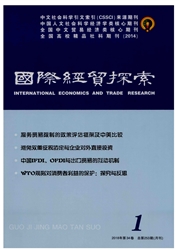

 中文摘要:
中文摘要:
文章宏观上通过西藏与我国其他省、市、自治区的横向对比,微观上根据日喀则市定日县西宗乡加盆村的调研情况,分析西藏的贫困状态。其后从人均GDP、农村人均收入、年度死亡率和小学以下人口所占比例四个方面,分析西藏财政支出的减贫效应。结论显示:经济发展滞后,是西藏自治区整体贫困的根源;家庭的生育率、死亡率、受教育程度均与家庭的贫困程度有着较强的联系。财政支出“减贫效果”最好的是人均GDP,其次分别为农村人均收入、死亡率和小学学历以下人口。因此,各级政府在通过财政进行减贫时,必须把公共福利的提高放到首位,在促进整体经济增长的同时,着重关注农牧民的增收,并且将教育减贫放在减贫工作的中心位置,注重人力资本建设与积累。
 英文摘要:
英文摘要:
The article compares Tibet with other provinces, municipalities and autonomous regions in China. And the poverty of Tibet is analyzed by referring to the investigation done in Gyapeng Village of Shipen Township in Tingri County of Shigatse in Tibet. Then, the poverty reduction effects of fiscal expenditure in Tibet is analyzed from the four aspects, namely per capita GDP, per capita income of rural residents, annual mortality rate and the proportion of population with only primary school education. The result shows that: backward economic development is the root of the poverty of Tibet autonomous region; a family's fertility and mortality rate, and its level of education are closely related with the family's poverty; poverty reduction effect of fiscal expenditure is the best on per capita GDP, then on rural per capita income, mortality, the population with only primary school education in sequence. Therefore, when the governments at all levels reduce poverty through fiscal expenditure, they must increase public welfare first, and promote overall economic growth, at the same time it is necessary to pay a close attention to the increase of farmers' income and the construction and accumulation of human capital, and to put education at the center of the poverty reduction work.
 同期刊论文项目
同期刊论文项目
 同项目期刊论文
同项目期刊论文
 期刊信息
期刊信息
